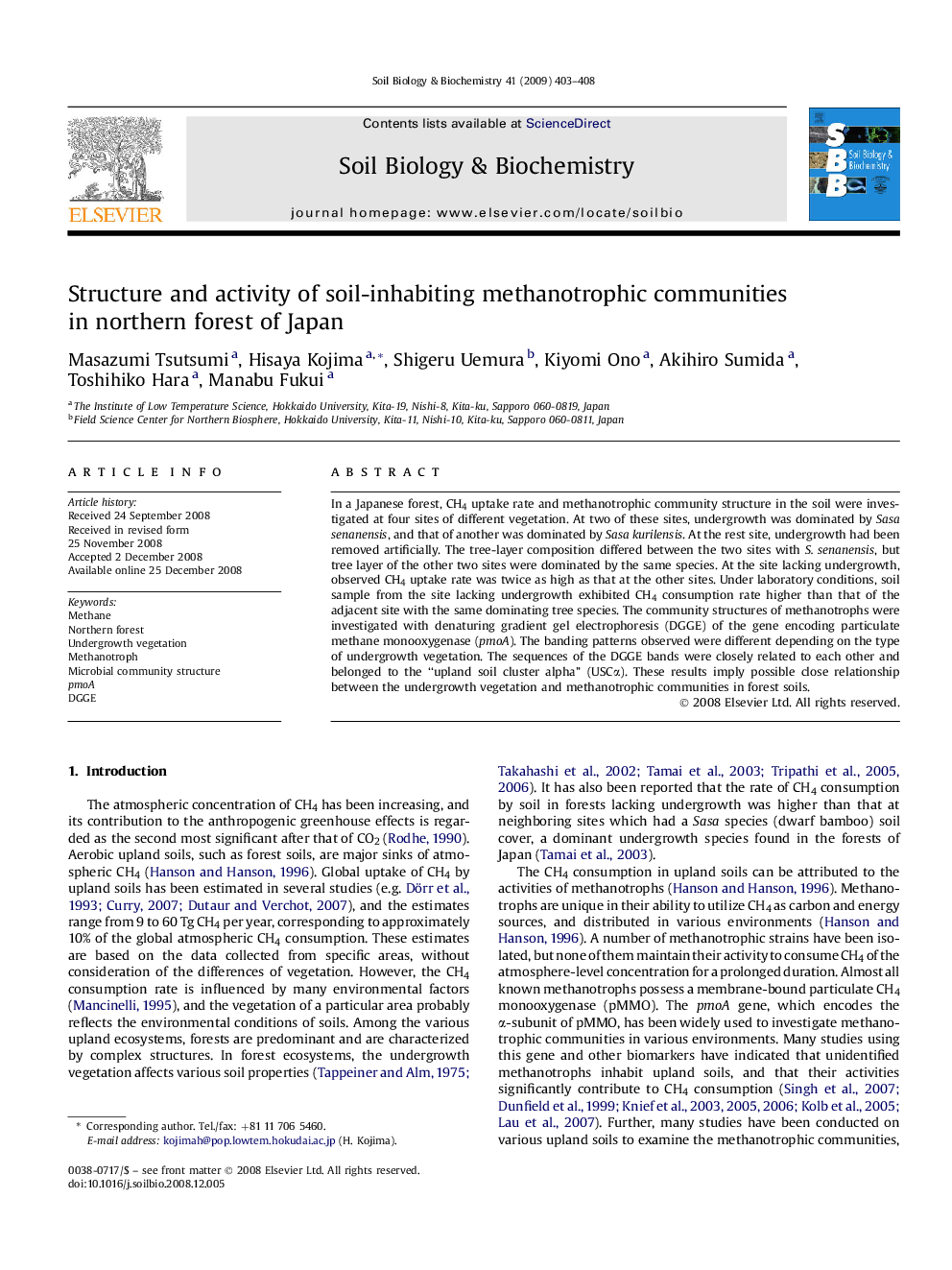| Article ID | Journal | Published Year | Pages | File Type |
|---|---|---|---|---|
| 2026143 | Soil Biology and Biochemistry | 2009 | 6 Pages |
In a Japanese forest, CH4 uptake rate and methanotrophic community structure in the soil were investigated at four sites of different vegetation. At two of these sites, undergrowth was dominated by Sasa senanensis, and that of another was dominated by Sasa kurilensis. At the rest site, undergrowth had been removed artificially. The tree-layer composition differed between the two sites with S. senanensis, but tree layer of the other two sites were dominated by the same species. At the site lacking undergrowth, observed CH4 uptake rate was twice as high as that at the other sites. Under laboratory conditions, soil sample from the site lacking undergrowth exhibited CH4 consumption rate higher than that of the adjacent site with the same dominating tree species. The community structures of methanotrophs were investigated with denaturing gradient gel electrophoresis (DGGE) of the gene encoding particulate methane monooxygenase (pmoA). The banding patterns observed were different depending on the type of undergrowth vegetation. The sequences of the DGGE bands were closely related to each other and belonged to the “upland soil cluster alpha” (USCα). These results imply possible close relationship between the undergrowth vegetation and methanotrophic communities in forest soils.
